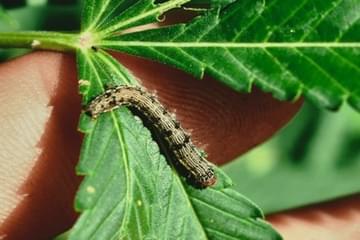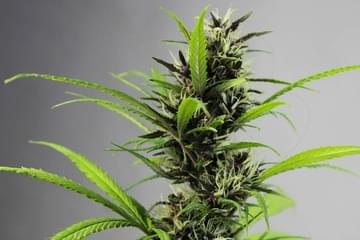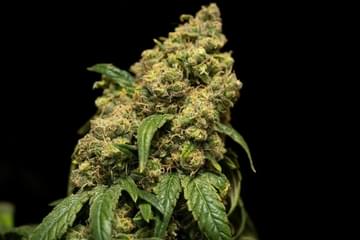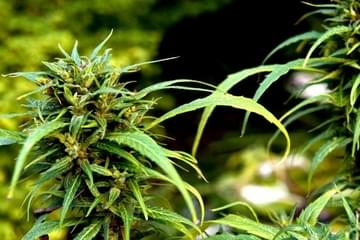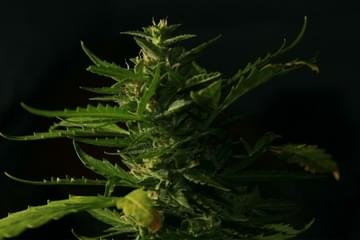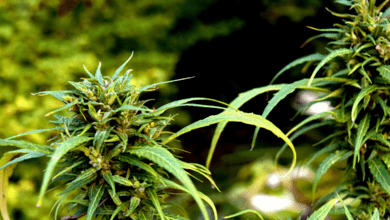
How Does Cannabis Crossbreeding Work?
Published on 6/25/21
The amount of different cannabis strains on the market in the U.S. and Canada is staggering. Just when you think you have a bit of a handle on the hundreds of options that are available to enjoy, a new crossbreed emerges and down the rabbit hole you go, seeking to identify the source, genetics, and characteristics of the previously unknown hybrid. In this article, we will take a look at the ins and outs of crossbreeding, with some background on why it is done, how new strains are made, and how to crossbreed weed.
What is Crossbreeding?
 Pexels
PexelsCrossbreeding can be done with animals and plants and occurs when two breeds are combined to create a new breed or strain that takes advantage of complementary traits that have been identified in each. Common examples in the animal world include the incredibly popular labradoodle and the ever-reliable mule. In terms of cannabis, breeding new hybrid strains benefits growers by allowing them to create new combinations of marijuana genetics that result in different potencies, smells, tastes, and flavors. Improved strength, larger yields, and resistance to pests like bugs and mold can also be fortified by proper crossbreeding.
The core cannabis types from which all available strains come are called landrace strains. These strains are native to certain regions of the world and provided the seeds that allowed cannabis cultivation to develop into the extensive industry it is today with its vast range of crossbred cannabis strains.
How to Breed Cannabis Plants
What many people may not know is that cannabis is dioecious. That means that it is a plant group that includes distinct male and female plants. Alternatively, monoecious describes a single plant that bears both male and female flowers. Most plant species are monoecious. Common examples are edible plants like corn that can fertilize their flowers using their own pollen. Dioecious plants represent only 7% of all flowering plant species. These are critical distinctions when considering how to crossbreed plants.
Male Cannabis Plants vs. Female Cannabis Plants
As a cannabis cultivator, you will need both male and female plants to get started. Always separate males and females to prevent unwanted contamination by pollen from male plants that have not been selected to cross.
In the early stages of growth, male and female plants look the same. Differences in appearance begin with the transition into the flowering phase when their sex will become evident. Regardless of sex, sativa strains will be tall and thin, while indica strains will tend to be short and stocky. Females produce the sought-after buds (flowers) and males simply produce sacs filled with pollen. The buds and the sacs both grow at the nodes of the plant where the branches connect to the stem. Female buds contain the trichomes that produce cannabinoids like THC, CBD, and THCV, and the trichomes that are beneficial well beyond the manner in which they influence taste and smell. Male plants do not produce buds, but those sacs bursting with pollen are essential to fertilizing the female flowers and crossbreeding cannabis.
The pollen from the male plant contains genes that spread to the female plant when crossbreeding occurs. Those genes contain the particular traits of the male plant. A seed produced by a cross-pollinated plant will then reflect traits from both parent plants.
Selecting Plants by Desirable Traits
 Unsplash
UnsplashIf you are thinking about how to breed weed there are a few steps to follow to ensure that your hybrid delivers the desired traits. Start by selecting female strains that have traits that you enjoy or want to be present in your new crossbreed: indica vs. sativa, taste, smell, pain relief, appetite enhancement, etc. Then, choose males that are derived from strains that show different vegetative traits that you think would complement your chosen female strain. Be sure to keep concise records of any crosses you make and the male and female parental lines that have been used.
Crossbreeding Male and Female Cannabis Plants
With your male and female plants chosen and on hand you are ready to crossbreed! The operation will entail taking mature pollen from the male and placing it on the mature female flowers. When the female flower is ready to receive the pollen, stigmas will develop. They are yellowish hair-like structures on which the pollen should be placed. Once these develop, you have around three weeks to pollenate. Here are some steps.
- When the pollen sacs on the male plant begin to open (you might also see yellow pollen present on the leaves), wrap a small paper bag over the selected branch and tie it with a piece of string or rubber band so it sits securely over the pod. You can also use a plastic cup or foil. Let the bag sit for several days to collect as much pollen as possible.
- When the female is ready and you prepare to remove the bag from the male, gently shake the branch to collect as much pollen as possible. Pollen can be frozen for later use. Remember to keep your female isolated from other plants.
- Place the bag directly over a branch or the entire female plant and gently shake the bag so the pollen settles on the stigmas. A small brush or even a finger can be used to brush specific flowers with pollen. Pollinating single flowers allows you to pollinate the same female plant with pollen from different males at the same time. With this process, labeling each flower is essential to tracking your work - things can get very confusing very quickly!
- Feed the mother plant. Go heavy on nitrogen and consider initiating a vegetative nutrient schedule to help the seeds develop. Your crossbred seeds will start forming a few weeks after pollination. Store them in a cool dry place for one or two months prior to attempting to germinate.
Crossbreeding Cannabis to Perfection
 Unsplash
UnsplashGenotypes and phenotypes are what determine what a plant becomes. The genotype is the genetic code that defines the possibilities a plant could have once fully developed. The traits of mature plants - particular shape, color, taste, smell, or potency - are determined by their phenotype. The plant's environment is what creates its physical traits from the genetic code. Plants from the same strain can be very different if they are grown in different environments. Once the basics of crossbreeding have been mastered, the next step for top cannabis cultivators is to breed plants that maintain their certain traits as uniformly as possible. Think about that tasty hybrid that you always purchase at your favorite dispensary. How is it always the same? It always has the same look, smell, taste, and effects. This is done by the trial-and-error process of carefully examining each plant (clone) and discarding those that have outlying characteristics. Cultivators look for clones that have very similar growth structures, terpene profiles, and appearances. Seeds from these clones are then used to continue the process.
Expert cannabis cultivators seeking uniform hybrid strains also want to have homozygous seeds and plants. It is a bit complicated, but it basically means that they have the same set of genes, which adds to the predictability and consistency that breeders and buyers want and expect in the hyper-competitive cannabis market. Heterozygous seeds are unpredictable and difficult to work with because they produce a wide variety of phenotypes. Homozygous seeds provide the security of knowing that your plants will consistently produce seeds with the same genetic makeup each time.
Cannabis Backcrossing
Another elevated form of crossbreeding is called backcrossing. It is used to pass a targeted characteristic from the parent plant to its offspring. With backcrossing only one parent plant is necessary. Once the desired phenotype has been identified, breeders can backcross the strain to strengthen the targeted traits and genetics. This type of inbreeding keeps the strain more homozygous, and the genes get passed down from generation to generation.
Do you have any experience with crossbreeding? Take a second to share your breeding plan and what strains you have created in the comments section below!











